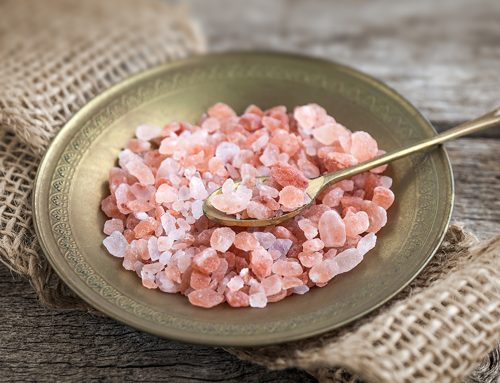Despite the scientific community’s repeated warnings about the dangers of pollution to human beings, plastic debris in the environment is a persistent problem that has yet to be solved. As a result, contamination of freshwater bodies, soil, and air our water supply and the soil in which we grow our food is being harmed. Plastic and microplastics have not only harmed the flora and fauna reducing our water supply. But is also slowly but steadily starting to contaminate to pollute our food supply and can be found in one of the staples of our diets: salt.
What are nano and microplastic particles?
Nano and microplastic particles are smaller than 5 mm in size. They are a subtype of plastic debris. They have been formed as a result of the fragmentation and degradation of large plastic items that have been polluted our environment. Since plastic is used across various industries with a broad range of applications, microplastics don’t have a definitive shape.
Presence of microplastics in table salt
There has been extensive research on plastic debris. The presence of nano and microplastic particles have been found in the air, soil, and particularly in saltwater bodies. Table salt and sea salts are usually produced from seawater. Through the process of crystallization, seawater is evaporated resulting in salt.
The potential of contaminants finding their way to the finished product is a concern and recent research has detected the presence of microplastics in commercial salt. The study analyzed 18 salt brands from countries all around the world and detected the presence of microplastic particles in 17 out of the 18 salt brands that were tested. 41.6% of the particles identified were plastic polymers such as polypropene and polyethylene, 23.6% pigment particles and 29.1% were unidentified.
Another study found out that 94% of table salt worldwide contained microplastics. Some of the microplastics found were polyethylene, terephthalate, polypropene, and polyethene. On average 140.2 microplastic particles were found per kilogram of salt. This is worrisome because the annual consumption of salt per person is 3.75 kilograms per year which means that people around the world are consuming several hundred microplastic particles through salt. Though the presence of microplastic particles remains small if environmental pollution continues the few hundreds of microplastics can exponentially increase in the future and have devastating effects on human health.
Detrimental effects of nano-plastic particles
Almost 6 billion people around the world consume salt. It is a staple in our diets and even the small presence of microplastics foreshadows its potential increase. With the existing ways to tackle environmental pollution, there is a very real possibility that the presence of microplastics could increase in the future.
There are no extensive studies about nano-plastic particles and their hazard to human health. Most microplastics come in and go out of the body. However, according to a report by Sapea (Scientific Advice for Policy by European academies), it has been demonstrated in laboratory settings, that high exposure to microplastics can result in physical and chemical toxicity, instigate inflammation, stress and, it can even block the gastrointestinal tract.
Occupational exposure of workers of microplastics resulted in lesions causing respiratory irritation and functional abnormalities. There is also the additional risk of chemicals attaching themselves to the microplastics which can have additional side effects on humans such as harm to reproductive health and increased risk to cancer.
Moreover, some of the potential impacts on human health can be, internal injury as a result of direct microplastic ingestion, indirect contamination from unhealthy substances leached from the plastic, and finally, they can potentially be vectors for pathogens.
A healthier alternative: Pink Salt
Unlike commercially produced salt which contains anti-caking agents and microplastics, pink salt is safe. Since it is the remnant of a dried-up shallow sea, the salt has been crystallized into rocks. Studies point out rock salt is mined from underground and was formed thousands of years ago. As a result, it remains unaffected by environmental pollution which has affected water, soil, and air.
In terms of chemical composition, it is similar to table salt with 95% to 98% of its structure comprising sodium chloride. Unlike table salt, however, Himalayan salt also contains traces of Calcium, Potassium, Magnesium, Manganese, and Iron. The different shades of the pink salt granule are known to contain different concentrations of trace elements.
However, authentic Himalayan pink salt comes from the Salt Range in the Punjab region in Pakistan. Though other varieties of pink salt found in other regions in the world, it does not contain traces of harmful chemicals such as Vanadium which has been found in Peruvian Pink Salt for example.
There are almost 6.7 billion tons of rock salt in the mountains out of which 220 million tons have been excavated. Most Himalayan Pink Salt is mined from Kehwra, a city located at the foothills of the Salt Range which is at the north of Jhelum city. Almost 400,000 tons of Pink Salt are exported from Khewra annually.
Though the presence of microplastics in salt remains small, almost 94% of table salt worldwide contains it. The list of potential health risks they pose is long: inflammation, toxicity to gastrointestinal blockage not to mention the carcinogenic chemicals that can attach themselves to the plastic. Switching to pink salt is a much better option not only it is devoid of anti-caking agents but it also free from microplastics since rock salt deposits were formed a long time ago and remain devoid of microplastic particles.
Import the high-quality Himalayan salt rich in magnesium and potassium. We know importing is hard, that is why we do all the heavy lifting. With PinkKehwra you can cut out the middlemen, we bring you pink salt to your doorstep. We cater to individuals, families, and industrial customers because we have warehouses in multiple cities to help deliver your order at the best price as quickly as possible. Contact us at 202 2882622 or visit us at 1221 24th St NW #606 Washington, D.C 20037.

